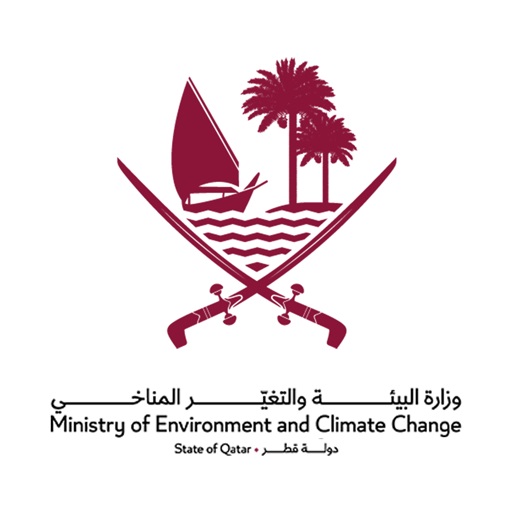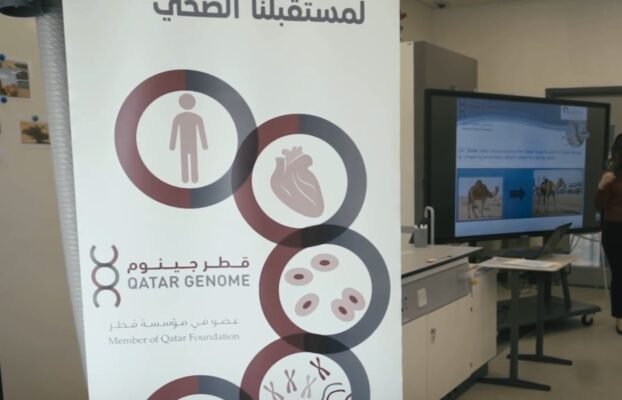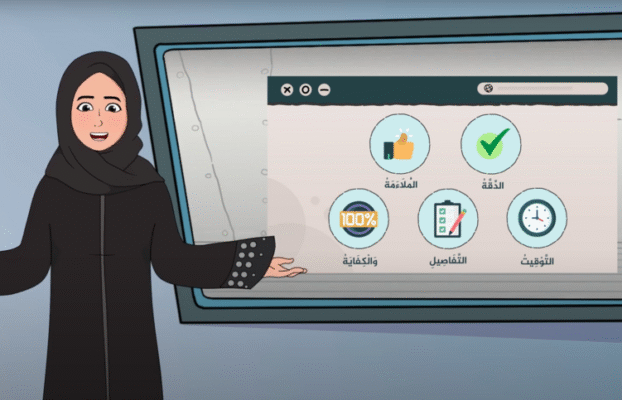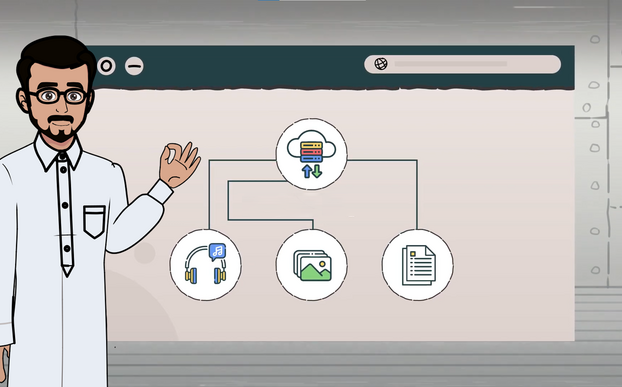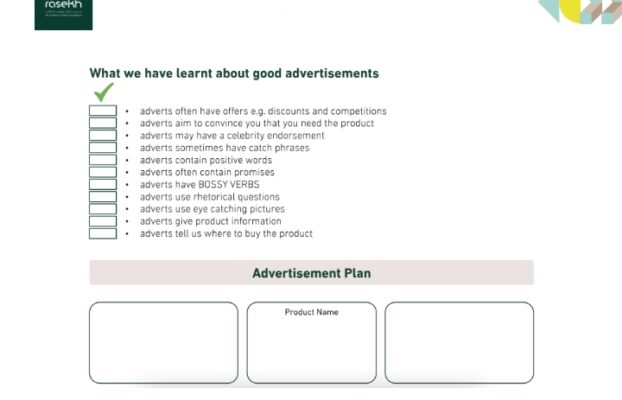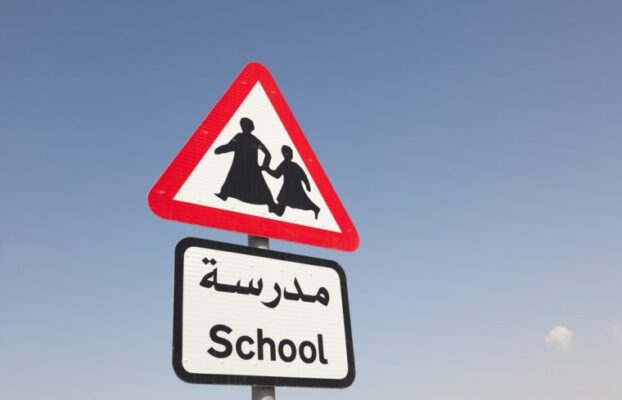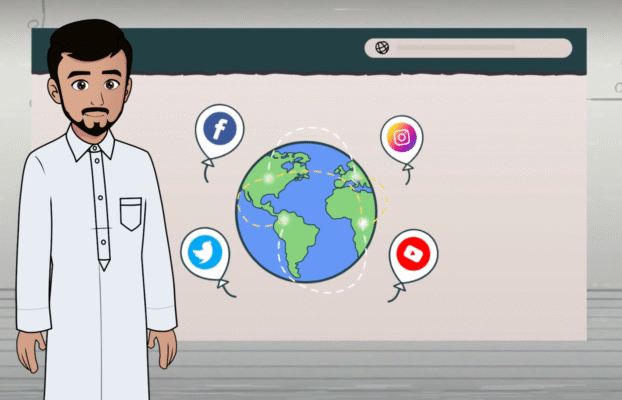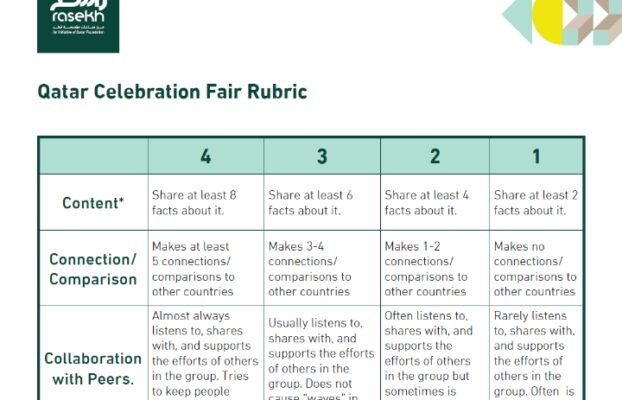Environmental Awareness
A Breath of Fresh Air
-
Sustainability
QNV 2030: Environmental Development
-
Resource Plan
-
SDG 13: Climate Action, SDG 3: Good Health and Well-Being, SDG 7: Affordable and Clean Energy
-
12 - 13 years
-
Arabic, English, Geography, Information and Communication Technology, Maths
-
Resource ID: 17018
- Share Feedback Embed Resource
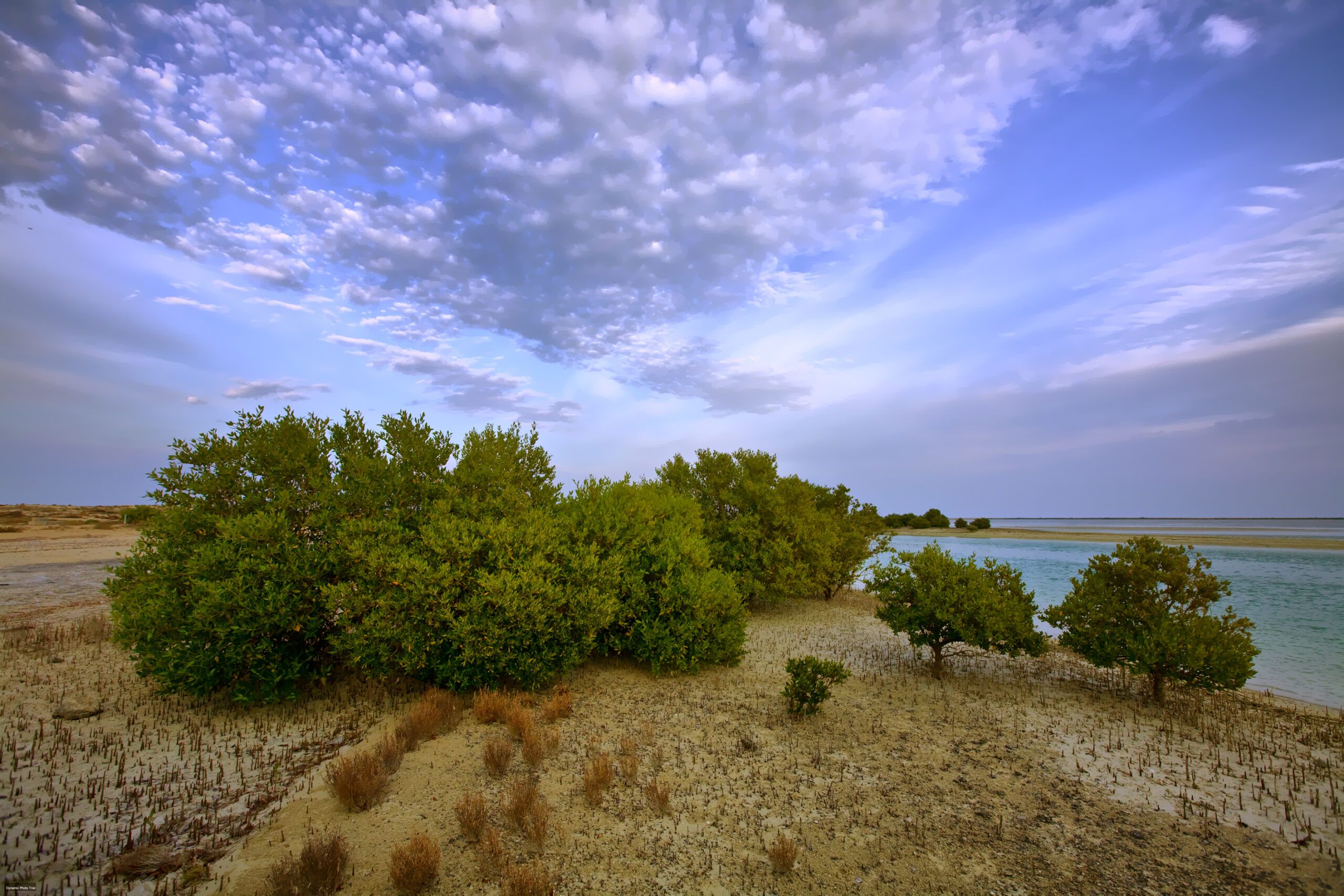
Overarching Goal(s)
- To equip learners with the knowledge, skills, motivation and understanding to demonstrate the importance of Glocalization as a sustainable model for learning.
- To inspire students to act sustainably from both local and global perspectives.
Learning Outcomes
- Learners develop lifelong skills which support their sustainable actions.
- Learners reflect on the impact of their actions and demonstrate their understanding of the action as related to sustainability.
Possible Duration (Hours)
8 hours
Qatar National Vision 2030 Connection
Qatar National Vision 2030: The students will align how the environmental development pillar is connected to air pollution.
English: https://www.gco.gov.qa/en/about-qatar/national-vision2030/
Arabic: https://www.gco.gov.qa/ar/about-qatar/national-vision2030/
Source: Government Communications Office (2023). Qatar National Vision 2030. [online] Government Communications Office. Available at: https://www.gco.gov.qa/en/about-qatar/national-vision2030/
Sustainable Development Goals (SDGs) Connection
SDG 3: Good Health and Well-Being: This lesson tool demonstrates and makes connections to clean environmental areas where air pollutants are low, which promotes and sustains the good health and well-being of citizens, residents, and visitors in Qatar.
SDG 7: Affordable and Clean Energy: Solutions such as electric cars, and solar panels throughout cities in Doha contribute to cleaner energy and sustainability.
SDG 13: Climate action: The statistical data demonstrates that climate action provides low levels of air pollutants throughout the cities to provide clean and sustainable environments.
The 17 Sustainable Development Goals:
English: https://sdgs.un.org/goals
Arabic: https://sdgs.un.org/ar/goals
Action Learning Outcomes
- Learners become more aware of their own strengths and areas for growth.
- Learners undertake challenges that develop new skills.
- Learners persevere in action.
- Learners work collaboratively with others.
- Learners consider the ethical implications of their actions.
Content
The content of the lesson tool revolves around air pollutants and interpreting; analyzing air pollutants statistical data collated by the Ministry of Environment and Climate Change.
Resource Utilization and Identification: Ministry of Environment and Climate Change.
Subject Matter: Geographical locations in Doha, interpretation and analyzing data statistics, Language(s) and Literacy.
Glocalization Connections: Kinds of pollution that exist locally and globally.
Differentiation: The word bank can be provided for the lower to middle ability students (as needed) for Learning Engagement 1, Activity 1; Task 5 in Learning Engagement 2. Group Task 4 in Learning Engagement 2 is recommended to assign to students with higher ability.
Critical Thinking: Encourage students to analyze the implications of air pollutants that have on the environment and health; well-being and suggest ways to sustain and contribute to cleaner, healthier cities.
Real-world Application: Students discuss and explain how we are responsible for keeping our environment clean, and they suggest positive ways in which we can promote and sustain clean air and energy.
Strategies
The strategies employed in this lesson tool are designed to foster analyzing, critical thinking, inquiry, collaboration, and innovative engagement. They include visible thinking routines, responsive pedagogy, and problem-solving approaches to adapt to students’ needs and encourage active participation. Students apply meaningful learning experiences that connect to the sustainability of cleaner air in Qatar.
Responsive and Adaptive Pedagogy: Adjust the pace and level of guidance based on student responses and engagement.
Visible Thinking Routines: Implement the “Connect-Extend-Challenge” which is used as a collaborative strategy where students work together to solve a problem about the assigned topic, promoting to think individually and sharing ideas.
Inquiry: Encourage students to inquire about the significance of the air pollutants statistical data for air transporters, travelers, residents and visitors.
Collaboration: Facilitate a class discussion forum where students can share and compare their perceptions, promoting collaboration and the exchange of diverse perspectives.
Assessment for and as Learning: Formative assessments for student responses and presentations.
Problem-Solving: Ask students to identify and propose solutions to challenges in climate and environmental surroundings.
Learning Experiences
Learning Engagement 1: Identifying and Understanding the Impact of Air Pollution
Learning Objective: To Identify and Understand the Impact of Air Pollution
Introduction and context setting
Students will use the ‘Connect-Extend-Challenge’ thinking routine. This encourages students to deepen their understanding and broaden their perspectives while facing uncertainties. It strengthens and links prior knowledge and new learning.
Connect – What is air pollution and how does it affect the areas we reside in?
Extend – What different kinds of pollution do you know that can impact on our health and the environment?
Challenge – How do countries locally and globally resolve air pollution issues to protect our health, environment and climate? Students will research and write the definition for ‘air pollution’.
Reflection
Students will share some of their responses with the rest of the class.
Teacher instructions for students:
The teacher will explain and emphasize to the students that clean air is healthy for us to breathe. Air can become polluted, that is contaminated with particles and gases that makes the air dirty and unhealthy. Air pollution consists of any visible or invisible gas or particle found in the air which is not part of the air’s normal composition. While some of the air has natural causes, most come from man-made sources.
Activity 1: Analyzing air pollution from man-made sources
The teacher will ask students to work in pairs (a small group of three students might need to be formed depending on the number of students in the class). The teacher will provide each pair with Resource 1: Sources that cause air pollution: https://rasekh.qa/wp-content/uploads/2024/07/Resource-1_-Sources-that-cause-air-pollution.pdf
The students will be asked to analyze each image carefully, and they will need to state and explain each image by answering the following questions:
- What is the man-made source that is causing the pollution?
- How does the source cause pollution in the air?
- What are the problems with this pollution to our environment locally and globally, and its consequences?
- The students will need to list and explain possible solutions for each of the problems identified.
A word bank can be provided to guide students who require support:
cars, carbon monoxide, factories, gases, graffiti sprays, household products, non-toxic, odorless, ozone, paint, pollution, toxic,VOCs (volatile organic compounds).
Each pair will create a poster, powerpoint, Prezi or another suitable digital presentation to address their responses and solutions.
Reflection
Each pair will share their presentations with the rest of the class, including providing examples of solutions/actions for each source.
Activity 2: Observing and identifying air pollutants
The teacher will arrange to take students on a safe ‘learning walking field trip’ for students to observe air pollutants. Each student should have their notebook and pen, or iPad to record observations. The teacher needs to avoid a rainy day as most air pollutants and surfaces would be cleansed by the rain.
Student friendly questions
What causes air pollution?
Why is it important to keep track of air pollutants in the air?
What impact can air pollutants have on our health and well-being?
Once outside, ask students to ‘smell’ the air. The teacher will ask the students if the air smells clean, like the smell after it rains or can they detect any other smells and record them on their notebooks or iPad.
Then the teacher will ask the students to look at the air around them and towards the horizon (caution hazard: avoid anyone looking into any direct sunlight). The teacher will ask the students if the air appears dusty, hazy, or does it appear clear? Students will note down their observations in their notebooks.
Then the students will be asked to observe and inspect physical objects in the area to find any physical evidence of air pollutants. For example, any cars or stationary objects collecting dust, or dirt). Ask students to define ‘air pollution’ using their own words and write this in their notebooks or iPads.
Student friendly questions
Do you think air pollutants are particles or gases? What makes you think this?
Do you think air pollution contains similar pollutants? Explain your answer.
Reflection
Students share responses at the field trip or when they return back to class. The teacher will emphasize from student responses of what they smelled and saw that indicate the presence of gaseous air pollutants. The teacher will display Resource 2: https://rasekh.qa/wp-content/uploads/2024/07/Resource-2_-Forms-of-Air-Pollutants.pdf – Forms of Air Pollutants and will explain the two forms of air pollutants: Particulate and Gaseous, by providing examples; making connections to what the students observed at the walking field trip. Often we can see particle pollution as they are visible and cars may be covered in yellow pollen, outdoor surfaces with dust and deposits of dirt or dust on indoor/outdoor surfaces or monuments and buildings. Gaseous pollution is challenging to detect as they are invisible and odorless.
Learning Engagement 2: Interpreting and Analyzing Air Pollutants Statistical Data
Learning Objective: To Interpret and Analyze Air Pollutants Statistical Data
The teacher will recap on the previous lesson and ask students to explain the two forms of air pollutants by providing specific examples.
Resource 3: Chapter XI: Environmental Statistics, 2022 source Ministry of Environment and Climate Change: https://rasekh.qa/wp-content/uploads/2024/07/Environment_11_2022_AE-.pdf
The teacher will share Resource 4: Islamic Link Caring and Preserving our Environment: https://rasekh.qa/wp-content/uploads/2024/07/Resource-4_-Islamic-Link-Caring-and-Preserving-our-Environment.pdf as an example of a local cultural/Islamic link as to how we can care and preserve our environment.
Instructions
The teacher will provide each small group of students with a digital copy of Resource 3, promoting sustainability and a cleaner environment.
If there is a need to print the resource, only print the mentioned page for each group task. Ensure each group has a different task accordingly.
Group Task 1
The teacher will explain to the students that they will interpret and analyze the Average monthly Air Pollution Indicator, statistical table 237, on page 7 from the resource of Movenpick (Al Corniche) area, 2022. The students will create a bar chart to represent the air pollutant data and will need to use a color key code to represent the description of the Air Pollutants indicator. Students will present their data visually on poster or Powerpoint using Microsoft Excel to create the bar chart. The chart should be included in the presentation. The students in this group must also research and explain in their own words what the data shows and what positive measures has Qatar taken to provide positive outcomes, and what local cultural/Islamic evidence can be connected to demonstrate our responsibility towards caring and preserving the environment.
Group Task 2
The teacher will explain to the students that they will interpret and analyze the Average monthly Air Pollution Indicator, statistical table 238, on page 9 from the resource of Qatar University area, 2022. The students will create a bar chart to represent the air pollutant data and will need to use a color key code to represent the description of the Air Pollutants indicator. Students will present their data visually and creatively on poster or Powerpoint using Microsoft Excel to create the bar chart. The chart should be included in the presentation. The students in this group must also explain in their own words what the data shows and what positive measures has Qatar taken to provide positive outcomes, and what local cultural/Islamic evidence can be connected to demonstrate our responsibility towards caring and preserving the environment.
Group Task 3
The teacher will explain to the students that they will interpret and analyze the Average monthly Air Pollution Indicator, statistical table 239, on pages 10 from the resource of Aspire Zone area, 2022. The students will create a bar chart to represent the air pollutant data and will need to use a color key code to represent the description of the Air Pollutants indicator. Students will present their data visually and creatively on poster or Powerpoint using Microsoft Excel to create the bar chart. The chart should be included in the presentation. The students in this group must also research and explain in their own words what the data shows and what positive measures has Qatar taken to provide positive outcomes, and what local cultural/Islamic evidence can be connected to demonstrate our responsibility towards caring and preserving the environment.
Group Task 4
This task is recommended for higher ability students. The teacher will explain that for this task the students will need to and interpret, analyze and collate the Percentage Distribution of Daily Monitoring of all three areas: Movenpick (Al Corniche), Qatar University and Aspire Zone tables 240 – 242, on pages 11-13. They will create visual pie chart(s) to represent and compare the three areas that demonstrate the indicator description percentage. For example: sulfur dioxide 100 per cent clean. Students will present their data visually and creatively on poster or Powerpoint using Microsoft Excel to create the pie chart(s) and comparisons. The chart should be included in the presentation. The students in this group must also research and explain in their own words what the data shows and what positive measures has Qatar taken to provide positive outcomes, and what local cultural/Islamic evidence can be connected to demonstrate our responsibility towards caring and preserving the environment.
Group Task 5
This task is appropriate for the lower/middle ability students.
The teacher will explain that this group of students will analyze and interpret the Annual Average Air Quality for all the three areas: Al Corniche, Qatar University and Aspire Zone, statistical table 236 of resource 3. The students will create a bar chart to represent the air pollutant data and will need to use a color key code to represent the description of the Air Pollutants indicator. Students will present their data visually and creatively on poster or Powerpoint using Microsoft Excel to create the bar chart(s). The chart should be included in the presentation. The students in this group must also research and explain in their own words what the data shows and what positive measures has Qatar taken to provide positive outcomes, and what local cultural/Islamic evidence can be connected to demonstrate our responsibility towards caring and preserving the environment.
Reflection/Action
Students in each group will prepare three significant useful tips that they would like to share with other students to promote clean air and energy for our environment and good health; well-being.
Each group will be designated by the teacher to present their presentations to another grade level within the school to raise environmental awareness, and will include sharing their sustainable tips.
Checking for Understanding
Learning engagement 1: Identifying and Understanding the Impact of Air pollution.
Check understanding from student’s responses.
Learning Engagement 2: Interpreting and Analyzing Air Pollutants Statistical Data.
Check understanding from student’s presentations; bar/pie chart(s) are accurate and provide the required data, colored key code and headings.
Differentiation
The lower ability students can be provided the word bank in Activity 1, if needed.
The higher ability students are recommended to challenge Group Task 4 in Learning Engagement 2 Activity, and Group Task 5 can be provided for the lower ability students.
Key Vocabulary
air, air quality, ash, carbon monoxide, climate, dirt, dust, environment, gaseous, ground level ozone, nitrogen dioxide, ozone, particulate matter, particles, pollen, pollutants, pollution, smog, sulfur dioxide
Resources
Resource 1: Sources that cause air pollution: https://rasekh.qa/wp-content/uploads/2024/07/Resource-1_-Sources-that-cause-air-pollution.pdf
Resource 2: Forms of Air Pollutants: https://rasekh.qa/wp-content/uploads/2024/07/Resource-2_-Forms-of-Air-Pollutants.pdf
Resource 3: Chapter XI: Environmental Statistics, 2022 source Ministry of Environment and Climate Change
Activity: https://rasekh.qa/wp-content/uploads/2024/07/Environment_11_2022_AE-.pdf
Resource 4: Islamic Link Caring and Preserving our Environment: https://rasekh.qa/wp-content/uploads/2024/07/Resource-4_-Islamic-Link-Caring-and-Preserving-our-Environment.pdf
Additional resource:
Qatar National Development Strategy, 2011-2016 Document, Pages 221-224, Cleaner air and effective climate change responses: https://rasekh.qa/wp-content/uploads/2024/07/Qatar-National-Development-Strategy-2011-2016-.pdf
Resource Publisher
Ministry of Environment and Climate Change
The Ministry of Environment and Climate Change is a service ministry that specializes in achieving many goals, foremost of which is protecting the environment, preserving its resources and reducing emissions that cause climate change.
